carseats
Safety is paramount when purchasing or hiring a car seat. In addition to the factsheet provided by Land Transport NZ below, we are fans of the car seat catalogue and articles available at NZ Child Restraints (which includes car seats recommended by a Safe2Go technician).
A tip for car seat buyers:
Did you know that some car seat manufacturers offer accident exchange programs where if your car seat is involved in an accident, they will provide you with a new car seat? Check if the car seat you are looking at buying qualifies by going to the manufacturers website.
To see all of the car seats we have featured, have a look at our move archives.
Once you have your carseat, your local Safe2Go technician can install your carseat for you or they or Plunket can check that you have installed it correctly for free.
Safety belts are designed for adult bodies. You must put your child in an approved child restraint until they are old enough to wear an adult safety belt.
Approved child restraints include:
Children aged five to seven years must use a child restraint if there's one available. Otherwise they must use a safety belt if one is available. If there are no child restraints or safety belts available, they must travel in the back seat.
Children aged 8 to 14 years must use a safety belt if one is available. Otherwise, they must travel in the back seat.
Note: A child under 15 years old may sit beside the driver only if the child is restrained by a child restraint or safety belt (whichever is appropriate for their age).
The cost of renting child restraints can vary. Sometimes Work and Income New Zealand can provide financial assistance.
More information on renting, buying and installing child restraints is available from Plunket, car seat retailers and Safe2Go technicians.
Safe2Go is an initiative funded by ACC and the NZ Transport Agency (NZTA). Technicians are trained to give advice to parents and caregivers on child restraints. The NZTZ contact centre, 0800 699 000, will be able to put you in touch with Safe2Go technicians.
As a general rule, if your child's head is higher than the back of the child restraint, it's time to move them into the next type of child restraint. (A child can wear an adult safety belt when the belt crosses their pelvis, not their tummy.)
Please note:
In-built child restraints
Some imported Japanese vehicles have in-built child restraints in the rear seats.
If you have one of these child restraints in your vehicle and the vehicle was entry-certified after 27 February 2005, the child restraint will have been checked and will be safe to use.
If the vehicle was first registered in New Zealand before 27 February 2005, you should get the child restraint checked at an NZTA agent to make sure it is safe.
Second-hand child restraints
If you're going to buy a second-hand child restraint, there are some things you should watch out for:
Harnesses on their own require a lap belt and a tether strap, while other child restraints use the three-point harness and a tether strap.
If you need help, contact your local Safe2Go technician (call the NZTA contact centre on 0800 699 000 for technicians' contact details).
If there aren't any anchor points in your vehicle, you have two options:
1. Install an anchor point in your vehicle. You can buy one from most places that sell child restraints and baby supplies. They come with instructions, but if you're not confident your local car mechanic will be able to install the anchor point.
2. Use a child restraint that's designed to work without upper tether straps.
If you must use a forward-facing child restraint in the front passenger seat (eg, because there aren't any rear seats), move the passenger seat back as far as it will go. If you can switch the front passenger airbag off in your vehicle then do this, but remember to switch it on again when the seat is used by an adult.
For more information, visit the Land Transport NZ website.
A tip for car seat buyers:
Did you know that some car seat manufacturers offer accident exchange programs where if your car seat is involved in an accident, they will provide you with a new car seat? Check if the car seat you are looking at buying qualifies by going to the manufacturers website.
To see all of the car seats we have featured, have a look at our move archives.
Once you have your carseat, your local Safe2Go technician can install your carseat for you or they or Plunket can check that you have installed it correctly for free.
Information from Land Transport NZ
Child Restraints
Land Transport NZ - Factsheet 7 February 2005Safety belts are designed for adult bodies. You must put your child in an approved child restraint until they are old enough to wear an adult safety belt.
Approved child restraints include:
- infant restraints for young babies (often called baby capsules)
- restraints for older babies and toddlers (often called car seats)
- harnesses and booster seats for preschool and school-aged children.
Your responsibilities as the driver
As the driver, you must make sure that any child under five years is properly restrained by an approved child restraint. They must not travel in the car if you can't put them in an approved child restraint.Children aged five to seven years must use a child restraint if there's one available. Otherwise they must use a safety belt if one is available. If there are no child restraints or safety belts available, they must travel in the back seat.
Children aged 8 to 14 years must use a safety belt if one is available. Otherwise, they must travel in the back seat.
Note: A child under 15 years old may sit beside the driver only if the child is restrained by a child restraint or safety belt (whichever is appropriate for their age).
Where you can get a child restraint
Child restraints are sold by retailers such as department stores, larger toy shops and shops that sell baby supplies. You can rent child restraints from the Plunket Society, other community groups and some companies.The cost of renting child restraints can vary. Sometimes Work and Income New Zealand can provide financial assistance.
More information on renting, buying and installing child restraints is available from Plunket, car seat retailers and Safe2Go technicians.
Safe2Go is an initiative funded by ACC and the NZ Transport Agency (NZTA). Technicians are trained to give advice to parents and caregivers on child restraints. The NZTZ contact centre, 0800 699 000, will be able to put you in touch with Safe2Go technicians.
What you need to know before you rent or buy a child restraint
The type of child restraint you need to use depends on the age and size of the child.- Infant restraint: Birth to 9 kg (or up to 13.5 kg) (approx. 6 months)
- Convertible (baby to child) restraint: Birth to 18 kg (approx. 4 years)
- Front-facing child restraint: 9–18 kg (6 months to approx. 4 years)
- Booster seat: 14–26 kg (approx. 4 years to 7 years)
- Child harness: 14–32 kg (approx. 4 to 7 years)
As a general rule, if your child's head is higher than the back of the child restraint, it's time to move them into the next type of child restraint. (A child can wear an adult safety belt when the belt crosses their pelvis, not their tummy.)
Please note:
- Some restraints fit the shape of some vehicle seats better than others. Make sure the child restraint you rent or buy fits your vehicle seats properly, and ask if you can return it if you find it doesn't fit properly.
- The Plunket Society recommends that you keep your baby in a rear-facing restraint until they are one year old. This is the safest position for them, and many child restraints now allow for this.
Using safety belts correctly
Safety belts are designed to hold one adult. Never put a safety belt around two or more children, and never put a child on an adult's lap with the belt around them both.Standards markings
A child restraint must meet an approved standard. Child restraints certified for use in New Zealand will show an 'S' mark (New Zealand Standard NZS 1754), or a tick (Australian Standard AS 1754), or an 'E' mark (European Standard ECE 44). Restraints that comply with the United States Standard (FMVSS 213) must, in addition to any other markings, display the New Zealand Standard 'S' mark, to show they have been certified for use in New Zealand.In-built child restraints
Some imported Japanese vehicles have in-built child restraints in the rear seats.
If you have one of these child restraints in your vehicle and the vehicle was entry-certified after 27 February 2005, the child restraint will have been checked and will be safe to use.
If the vehicle was first registered in New Zealand before 27 February 2005, you should get the child restraint checked at an NZTA agent to make sure it is safe.
Second-hand child restraints
If you're going to buy a second-hand child restraint, there are some things you should watch out for:
- Don't buy a child restraint that has been in a crash. It won't be safe.
- Check the child restraint for a date of manufacture or a 'do not use after' date. Some seats have a six-year life and some have as long as 10 years. Don't use a restraint that is more than 10 years old.
- Look for a 'Standards' mark, indicating that the child restraint is approved for use in New Zealand.
- Look for any signs of deterioration, including cracks in the child restraint's shell or fraying of the harness. Don't buy a worn or damaged child restraint – the NZTA is not aware of anyone who repairs damaged child restraints.
- Make sure that the restraint has all the necessary parts and that all parts are in good working order.
- Make sure the child restraint comes with a user manual. If not, contact the manufacturer and ask for one.
How to attach a child restraint so it is safe
Always follow the manufacturer's instructions when securing a child restraint in a vehicle – the child restraint may not be safe if you don't. Different child restraints require different safety belts. For example, some child restraints for babies and younger children can be secured using a lap belt in the back middle seat, with or without a tether strap, but others (eg, a booster seat without a harness) must use a normal three-point safety belt.Harnesses on their own require a lap belt and a tether strap, while other child restraints use the three-point harness and a tether strap.
If you need help, contact your local Safe2Go technician (call the NZTA contact centre on 0800 699 000 for technicians' contact details).
Tether straps
Some child restraints have upper tether straps. This means that they still use the vehicle's safety belts, but also have a strap that must be clipped onto an anchor point in the vehicle. Anchor points are usually on the rear parcel tray, or, in the case of station wagons, on the floor behind the rear seats.If there aren't any anchor points in your vehicle, you have two options:
1. Install an anchor point in your vehicle. You can buy one from most places that sell child restraints and baby supplies. They come with instructions, but if you're not confident your local car mechanic will be able to install the anchor point.
2. Use a child restraint that's designed to work without upper tether straps.
What if my car has airbags?
- It's important that you never put a child, in a rear-facing child restraint, in the front seat of a car that has a passenger airbag. The child could be seriously injured or killed if the airbag is activated.
- All child restraints, including forward-facing restraints, are best installed in the rear passenger seat (not in the front).
If you must use a forward-facing child restraint in the front passenger seat (eg, because there aren't any rear seats), move the passenger seat back as far as it will go. If you can switch the front passenger airbag off in your vehicle then do this, but remember to switch it on again when the seat is used by an adult.
For more information, visit the Land Transport NZ website.
advertisements
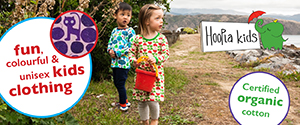
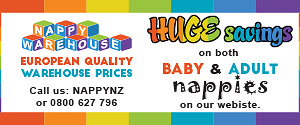
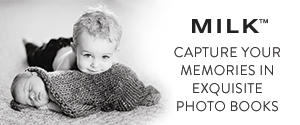

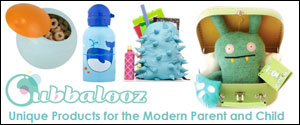
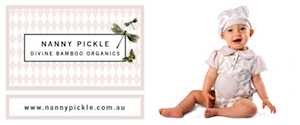
| 1. 10 candles to light your fire - how much fun can you fit on your cake?! 2. Hoopla kids - Scrumptious looking gears to brighten your kids' wardrobes 3. How to dress your child for a special occasion 4. Fruity pineapple flamingo party - Sweet, bright and sunny 5. Spanish Baby Bites- European sleeping bags that are unique and adorable |
|
|
| 1. Upcycling baby clothes - Turn your most treasured items into something that lasts 2. Grace's ballet party - celebrate your tiny dancer 3. After the birth - What to expect when you've welcomed your bundle of joy 4. Lalaloopsy party - How to craft your party around a centrepiece 5. 10 candles to light your fire - how much fun can you fit on your cake?! |
|
|
| 1. Scone peapods - the cutest and most delicious vegetables around 2. Lalaloopsy party - How to craft your party around a centrepiece 3. Superkids Scroggin- An innovative lunchbox idea 4. Jeffrey's Lego Party - totally Legotastic 5. Best indoor playsets - Unbelievable fun most of us can only dream of! |





